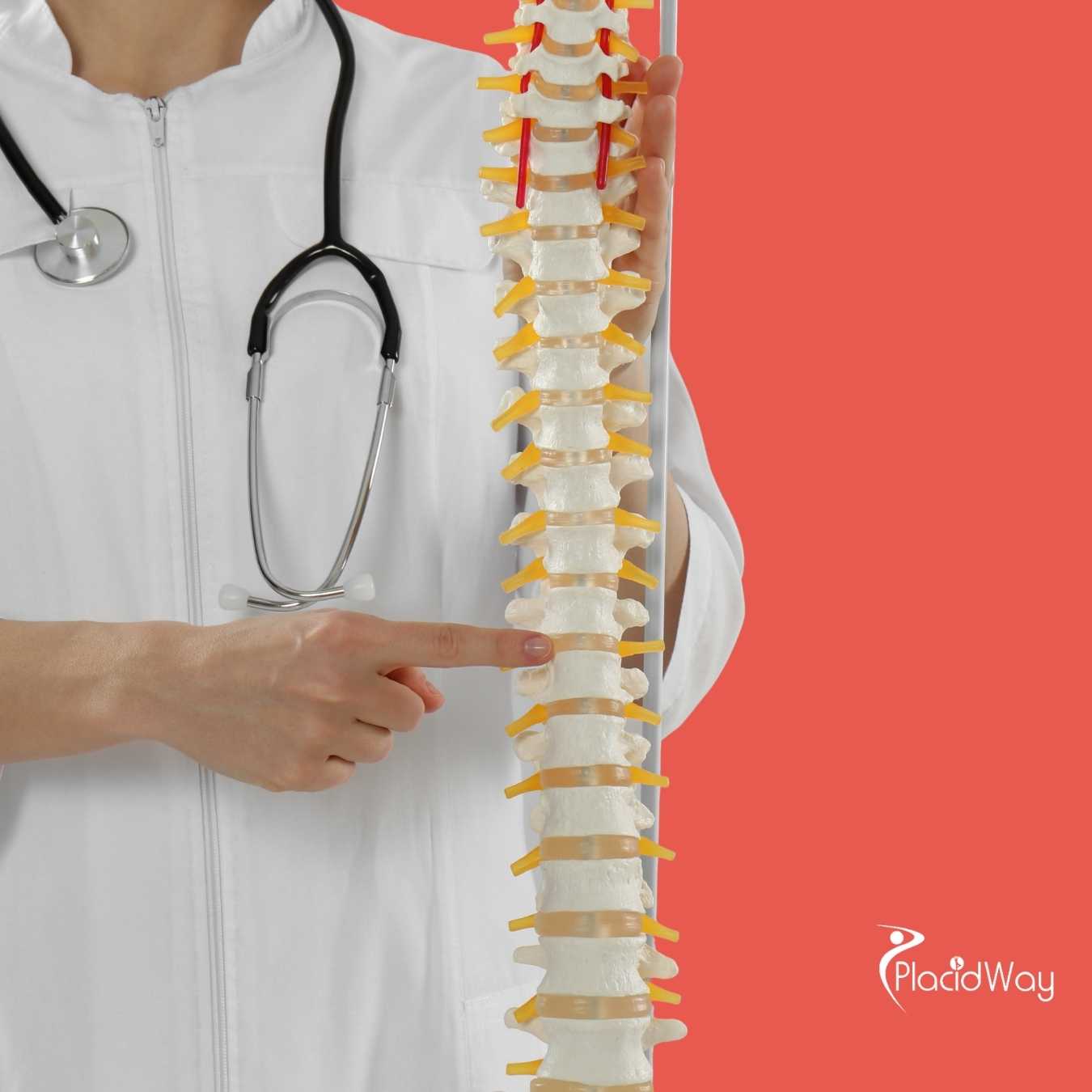Stem Cells for Anemia: A Breakthrough in Regenerative Medicine
When we talk about anemia, we're referring to a condition where your blood lacks enough healthy red blood cells to carry adequate oxygen to your body's tissues. This can leave you feeling tired, weak, and short of breath. While there are many different types of anemia, some of the most severe forms, often linked to problems with the bone marrow, can be debilitating. The exciting news is that for certain anemias, especially those stemming from bone marrow issues, stem cell therapy offers a real potential for a cure.
This blog post will explore how stem cells work in treating anemia, delve into the specific types of anemia that can benefit from this advanced therapy, and discuss what patients and their families should know about the process. We'll cover everything from the mechanisms of treatment to potential risks, success rates, and even considerations for those exploring medical tourism for these specialized treatments. Understanding the role of stem cells in curing anemia can provide hope and clarity for many seeking effective solutions.
Can Stem Cells Cure Anemia?
Stem cell therapy for anemia, especially hematopoietic stem cell transplantation (HSCT), holds significant promise and has achieved curative results for certain types of anemia. These therapies work by replacing diseased or dysfunctional blood-forming cells in the bone marrow with healthy ones. The goal is to restore the body's ability to produce a full complement of functional red blood cells, white blood cells, and platelets.
For conditions like aplastic anemia, thalassemia, and sickle cell anemia, where the underlying problem is a defect in the stem cells that produce blood, replacing these faulty cells with healthy donor cells can lead to a complete recovery. It's a complex and intensive treatment, but for many, it offers a permanent solution and a significant improvement in quality of life. The effectiveness depends heavily on the specific type of anemia, the patient's overall health, and the success of finding a suitable donor.
What Types of Anemia Can Be Treated with Stem Cells?
Not all forms of anemia are suitable for stem cell treatment. The types that benefit most are those where the root cause lies within the hematopoietic stem cells themselves or the bone marrow environment. Here are the primary types of anemia where stem cell therapy is considered a viable or curative option:
- Aplastic Anemia: This is a severe condition where the bone marrow stops producing enough new blood cells. HSCT is often the most effective treatment, especially for younger patients with a matched donor.
- Sickle Cell Disease: A genetic blood disorder where red blood cells become rigid and sickle-shaped. A successful stem cell transplant can replace the faulty cells, producing healthy red blood cells.
- Thalassemia: Another inherited blood disorder characterized by abnormal hemoglobin production. Transplants can alleviate the need for lifelong blood transfusions and associated complications.
- Myelodysplastic Syndromes (MDS): A group of disorders where the bone marrow doesn't produce enough healthy blood cells, often progressing to leukemia. HSCT can be curative for some patients.
- Fanconi Anemia: A rare, inherited disorder that affects the bone marrow, leading to decreased production of all types of blood cells. HSCT is the only known cure.
These conditions often require intensive treatments, and stem cell transplantation offers a chance for sustained remission or a permanent cure by correcting the underlying cellular defect.
How Do Stem Cells Work to Treat Anemia?
The mechanism behind how stem cells cure anemia is rooted in their unique ability to differentiate and self-renew. Hematopoietic stem cells (HSCs), found primarily in bone marrow, umbilical cord blood, and peripheral blood, are the progenitors of all blood cells. The process of stem cell transplantation for anemia typically involves several key steps:
- Conditioning: The patient first undergoes a "conditioning" regimen, usually involving high-dose chemotherapy and/or radiation. This step is crucial for two reasons: it destroys the diseased bone marrow cells and suppresses the patient's immune system to prevent rejection of the new donor cells.
- Infusion: After conditioning, healthy stem cells, collected from a donor (allogeneic transplant) or sometimes the patient themselves (autologous transplant, though less common for anemia), are infused intravenously into the patient.
- Engraftment: These infused stem cells travel to the bone marrow, where they "engraft" or settle. Once engrafted, they begin to multiply and mature, gradually repopulating the bone marrow with healthy, functional blood-forming cells. This leads to the production of healthy red blood cells, white blood cells, and platelets, effectively replacing the faulty system that caused the anemia.
This regenerative process directly addresses the cellular deficiency or defect at the core of many severe anemias, offering a long-term solution rather than just managing symptoms.
What is the Difference Between Stem Cell Therapy and Bone Marrow Transplant for Anemia?
The terms "stem cell therapy" and "bone marrow transplant" are often used interchangeably, but there's a subtle yet important distinction, especially in the context of treating anemia. Both refer to the process of replacing diseased blood-forming cells with healthy ones.
- Bone Marrow Transplant: Historically, this was the primary method. It specifically refers to the collection of hematopoietic stem cells directly from the bone marrow, usually from the hip bone, under general anesthesia. The transplant procedure itself is an intravenous infusion, similar to a blood transfusion.
- Hematopoietic Stem Cell Transplantation (HSCT): This is the more accurate and encompassing medical term. HSCT includes stem cells sourced from:
- Bone Marrow: As described above.
- Peripheral Blood Stem Cell (PBSC) Transplant: This is now the most common type. Stem cells are mobilized from the bone marrow into the bloodstream using medication and then collected from the blood using a process similar to dialysis (apheresis).
- Umbilical Cord Blood Transplant: Stem cells are collected from the umbilical cord and placenta after birth and stored. This source is rich in stem cells and has a lower risk of Graft-versus-Host Disease (GvHD), but the cell count might be lower. So, while all bone marrow transplants are a form of stem cell therapy, not all stem cell therapies for anemia are bone marrow transplants. The choice of stem cell source depends on factors like the patient's condition, donor availability, and medical guidelines.
What are the Risks and Side Effects of Stem Cell Therapy for Anemia?
While stem cell therapy offers a potential cure for certain anemias, it is a demanding and intensive procedure associated with significant risks and potential side effects. Patients and their families must be fully informed before considering this option. Key risks and side effects include:
- Infection: The conditioning regimen severely suppresses the immune system, making patients highly susceptible to bacterial, viral, and fungal infections, which can be life-threatening.
- Graft-versus-Host Disease (GvHD): This is a major complication of allogeneic transplants, where the donor's immune cells recognize the recipient's body as foreign and attack it. GvHD can affect the skin, liver, gut, and other organs, ranging from mild to severe, and can be acute or chronic.
- Organ Damage: High-dose chemotherapy and radiation used in conditioning can cause damage to organs like the liver, kidneys, lungs, heart, and brain, sometimes leading to long-term complications.
- Relapse: Despite successful engraftment, there is always a risk that the original disease may return.
- Infertility: The conditioning regimen often results in temporary or permanent infertility, especially for younger patients.
- Mucositis: Inflammation and sores in the mouth and digestive tract, causing pain and difficulty eating.
- Fatigue and Weakness: Prolonged periods of exhaustion are common during recovery.
These risks are carefully managed by a specialized medical team, and patients undergo extensive monitoring throughout the process.
What is the Success Rate of Stem Cell Therapy for Anemia?
The success rate for stem cell transplantation for anemia is not a single figure but depends on several critical factors. Generally, for conditions where HSCT is the standard of care, outcomes have improved considerably over the years. Here's a breakdown of factors influencing success rates:
- Type of Anemia:
- For severe aplastic anemia in younger patients with a matched sibling donor, survival rates can be as high as 70-90%.
- For sickle cell disease, successful transplants can lead to a cure in 85-95% of children with matched sibling donors.
- For thalassemia major, success rates can be 80-90% for children without significant prior organ damage.
- For myelodysplastic syndromes, success varies widely depending on the disease stage and patient characteristics.
- Donor Match: A fully matched donor (especially a sibling) significantly improves success rates and reduces the risk of GvHD. Unrelated donor transplants are also common but may have slightly higher complication rates.
- Patient Age and Health: Younger patients and those in better overall health before the transplant generally have better outcomes. Comorbidities can increase risks.
- Timing of Transplant: For some conditions, transplanting earlier in the disease course, before significant organ damage occurs, can lead to higher success rates.
- Treatment Center Expertise: Experienced transplant centers with specialized teams tend to have better outcomes.
It's crucial to discuss specific success rates and prognosis with the treating physician, as individual circumstances play a huge role.
Who is a Candidate for Stem Cell Therapy for Anemia?
Determining eligibility for stem cell therapy to cure anemia involves a comprehensive evaluation by a multidisciplinary medical team. This therapy is not suitable for everyone, as the intensity of the treatment requires a certain level of physical resilience. Key criteria typically include:
- Diagnosis of a Suitable Anemia: The patient must have a type of anemia known to respond well to stem cell transplantation, such as severe aplastic anemia, high-risk myelodysplastic syndrome, sickle cell disease, or thalassemia major, where other treatments are insufficient or failed.
- Overall Health Status: Candidates must be healthy enough to withstand the rigorous conditioning regimen, which involves high-dose chemotherapy and/or radiation. This includes having good organ function (heart, lung, kidney, liver) and no active serious infections.
- Age: While there is no strict upper age limit, younger patients generally tolerate the procedure better and have higher success rates due to greater physiological reserve.
- Availability of a Suitable Donor: For allogeneic transplants (using donor cells), finding a human leukocyte antigen (HLA)-matched donor is critical. This is most often a matched sibling, but unrelated donors from registries or cord blood units can also be used.
- Absence of Other Serious Conditions: Patients with uncontrolled severe comorbidities may not be considered good candidates due to increased risks.
A thorough medical workup, including imaging, blood tests, and consultations with specialists, is essential to assess candidacy and discuss the risks versus benefits.
What is the Cost of Stem Cell Therapy for Anemia?
The financial aspect of stem cell therapy for anemia is a significant consideration, as it is one of the most complex and expensive medical procedures. The overall cost can vary dramatically based on location, type of transplant, length of hospital stay, and complications. Cost components typically include:
- Pre-transplant Evaluation: Extensive testing to assess the patient's health and find a suitable donor.
- Donor Search and Workup: Costs associated with identifying and preparing a donor, including HLA typing and health screenings.
- Conditioning Regimen: High-dose chemotherapy and/or radiation.
- Stem Cell Collection and Processing: The procedure to harvest and prepare the stem cells for infusion.
- Transplant Procedure: The actual infusion of stem cells.
- Hospital Stay: Patients typically require several weeks to months of hospitalization post-transplant for monitoring and managing complications. This is a major cost driver.
- Medications: Immunosuppressants, antibiotics, antivirals, and other supportive care medications, often for extended periods.
- Post-transplant Follow-up: Lifelong monitoring, including regular clinic visits, blood tests, and management of any long-term complications.
In many countries, health insurance may cover a significant portion of the cost if the treatment is deemed medically necessary. However, out-of-pocket expenses can still be substantial, leading some to explore options abroad.
Can I Seek Stem Cell Therapy for Anemia Through Medical Tourism?
Medical tourism for specialized treatments like stem cell therapy for anemia has become a viable option for many individuals worldwide. People often travel abroad for several reasons:
- Cost Savings: The cost of stem cell transplantation in countries like India, Turkey, Mexico, or Thailand can be significantly lower compared to Western countries like the USA or Europe, often by 50% or more. This makes otherwise unaffordable treatments accessible.
- Access to Treatment: In some cases, patients may face long waiting lists in their home countries or may not meet strict eligibility criteria for certain trials or procedures. Medical tourism can offer quicker access.
- Advanced Technologies and Expertise: Many international hospitals specialize in areas like hematology and oncology, offering state-of-the-art facilities and highly experienced medical professionals who perform a high volume of these complex procedures.
However, it's crucial to approach medical tourism for such a serious procedure with careful planning and research. The quality of care, accreditation of facilities, and the expertise of the medical team should be paramount considerations.
What Should I Consider When Choosing an Overseas Clinic for Stem Cell Anemia Treatment?
Selecting an overseas clinic for a life-altering procedure like stem cell therapy for anemia requires diligent research and consideration. This is not a decision to be taken lightly. Here are essential factors to consider:
- Accreditation and Certification: Look for international accreditations such as Joint Commission International (JCI) or local equivalents that signify adherence to high standards of patient care and safety. Confirm that the clinic is reputable for performing hematopoietic stem cell transplants.
- Physician Expertise and Experience: Research the qualifications, experience, and specialization of the hematologists and transplant specialists who will be overseeing your care. Inquire about their track record with stem cell therapy for anemia.
- Facility and Technology: Ensure the clinic has state-of-the-art facilities, including specialized sterile units for transplant patients, advanced diagnostic equipment, and a well-equipped intensive care unit (ICU) for potential complications.
- Transparency in Pricing: Obtain a detailed, all-inclusive cost estimate upfront, covering pre-transplant evaluations, the procedure, hospital stay, medications, and follow-up care. Be wary of hidden fees.
- Post-Treatment Care and Follow-up: Understand the plan for post-transplant monitoring and follow-up care, both while you are abroad and upon your return home. This is critical for managing potential long-term complications.
- Language and Communication: Ensure there are clear communication channels and that medical staff can communicate effectively in your language to avoid misunderstandings.
- Donor Matching Services: If an allogeneic transplant is needed, confirm the clinic's capabilities in finding and managing suitable donors, whether from a local registry or internationally.
Thoroughly researching these aspects will help ensure a safer and more effective treatment experience abroad.
Are There Non-Transplant Stem Cell Therapies Being Researched for Anemia?
While hematopoietic stem cell transplantation (HSCT) is currently the most established and often curative stem cell therapy for anemia, research is constantly pushing the boundaries of what's possible. Scientists are exploring less invasive and potentially safer alternatives, especially for patients who are not suitable for traditional HSCT or for whom a donor cannot be found. Emerging non-transplant stem cell therapies include:
- Gene Therapy: This involves modifying a patient's own hematopoietic stem cells (autologous cells) to correct genetic defects that cause conditions like sickle cell disease or thalassemia. The corrected cells are then returned to the patient, ideally without the need for a matched donor or severe immune suppression. This field shows great promise with ongoing clinical trials.
- Induced Pluripotent Stem Cells (iPSCs): Researchers are working on converting a patient's ordinary cells into iPSCs, which can then be differentiated into healthy hematopoietic stem cells. These "patient-specific" stem cells could then be used for transplantation, potentially eliminating the risk of GvHD.
- Mesenchymal Stem Cell (MSC) Therapy: MSCs are being investigated for their immunomodulatory and regenerative properties. While not directly forming blood cells, they may help improve the bone marrow microenvironment, potentially stimulating endogenous blood production or reducing GvHD post-transplant.
- Pharmacological Approaches to Stimulate Stem Cells: Development of drugs that can selectively expand or enhance the function of a patient's existing healthy stem cells within the bone marrow to improve blood production.
These approaches aim to reduce the toxicity and complications associated with conventional HSCT, making stem cell therapies for anemia more accessible and safer for a broader range of patients in the future. If you or a loved one are exploring options for stem cell therapy for anemia or other complex medical conditions, PlacidWay can help you navigate the world of medical tourism. PlacidWay connects you with accredited clinics and experienced specialists globally, offering comprehensive solutions for your healthcare journey.

.png)

.png)









Share this listing